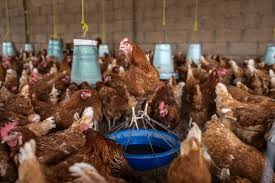 Growing consumption whets the global poultry industry's appetite for growth in the Gulf region
Growing consumption whets the global poultry industry's appetite for growth in the Gulf region
The global poultry industry continues to grow, amidst a range of changing economic, environmental, and technological factors. Most estimates predict that the global market will grow by 2.5 to 3% this year.
With continued rising demand for low-cost animal protein, particularly in emerging markets, led by the Gulf region, the poultry sector remains one of the most stable and expanding food sectors.
However, despite building on the strong momentum achieved last year and returning to the long-term average global market growth, estimates do not negate the discrepancy in the market's value by 2030.
The growth of the poultry industry in 2024 has clearly contributed to strong financial investment flows into the sector this year. The greatest focus is now on expansion in the Middle East, while investments in Europe and North America are recovering.
While US estimates indicate the market will reach $375 billion by that year, European estimates are lower at $356 billion.
Increasing Demand at a Low Cost
This dynamic in the global market is being reinforced by the high consumption of poultry meat compared to other types of meat, due to its competitive prices, which make it a preferred choice for consumers in difficult economic conditions.
LC Taylor, a researcher at the Food and Agriculture Organization of the United Nations (FAO), attributed this positive situation in poultry markets to the affordability of production compared to similar animal protein sources. However, he added another factor.
He told Al-Eqtisadiah: "There is a shift towards poultry production in developed economies due to the relatively low carbon footprint of poultry compared to other animal proteins, and this shift is fueling the growth of this industry."
The Gulf is an Attractive Market
The Gulf market is highly attractive to the poultry industry, according to Elaine Mansour, Marketing Director at British food company Avara Food. Mansour told Al-Eqtisadiah: "Countries in the region are witnessing a significant increase in consumption of poultry products compared to the global average."
In Saudi Arabia, estimates typically range between 38 and 40 kilograms per person per year; in the UAE, it is slightly lower, ranging between 32 and 35 kilograms, according to Elaine Mansour.
Although most Gulf countries rely on imports to meet local demand, per capita consumption rates often exceed the global average, placing them among markets with relatively high consumption.
Supply Challenges
Despite this positive climate for the global poultry industry, the sector faces challenges that could negatively impact supply growth. The most prominent currently is avian influenza, which remains a major problem that could disrupt local markets and global trade.
This is compounded by the negative impacts resulting from escalating tensions. Geopolitics and changing trade relations create volatility that affects trade flows and prices.
FAO data indicates that despite the cyclical fluctuations caused by the avian influenza outbreak, poultry product prices are expected to stabilize in the long term, with moderate increases over time.
The U.S. Department of Agriculture projects that the price of chicken per pound (about 0.45 kilograms) will reach $1.27 this year, a decrease of about 2% from last year.
Over the next decade, technological improvements and improved production efficiency will keep price increases in check, even as global demand continues to grow.
Source: www.aleqt.com


















